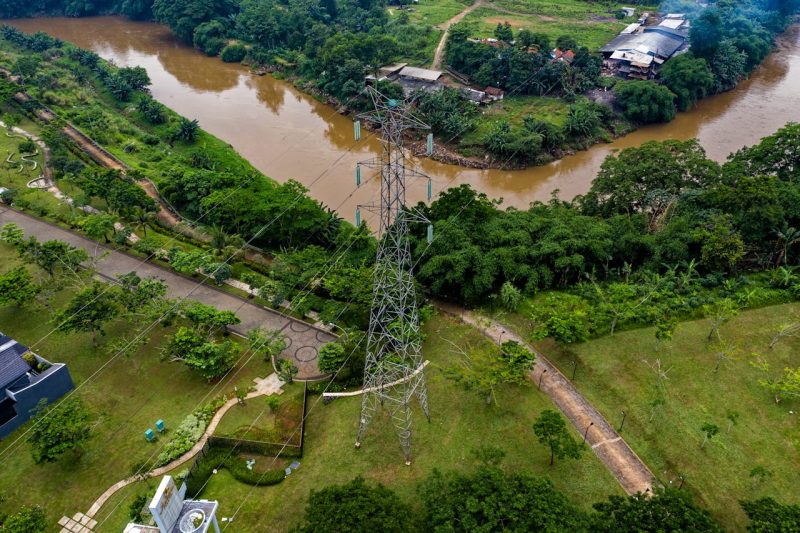
For Americans, Electricity Bills Vary Based On Where They Live

Electricity bills are anything but uniform across the United States. The price people pay depends on where they live, and it is not just about the cost of oil and gas. Local investments in infrastructure, the risk of extreme weather, and the role of renewable energy all shape electricity rates.
Some states pay far more than others, and the difference can be staggering.
The U.S. Energy Information Administration reported that in 2024, residents in Hawaii, Connecticut, and Alabama faced the highest electricity bills, while those in Utah, New Mexico, and Colorado paid the least. This variation means some Americans are paying hundreds more per year than their neighbors in other states.
Extreme Weather and Volatile Energy Markets Push Prices Higher
Electricity prices have outpaced overall inflation in recent years, hitting lower-income households the hardest. Energy costs have risen by about 34% since 2020, while overall consumer prices climbed just 23%. Lower-income families, earning less than $50,000 a year, now spend nearly 7% of their income on electricity and natural gas.
Higher earners, by contrast, allocate just over 1% of their budget to these expenses.

Vlad / Pexels / A major factor driving these costs is extreme weather. Harsh winters and scorching summers push up demand for heating and air conditioning, leading to bigger bills.
Utility companies are also spending billions to modernize old power grids, replacing poles, wires, and substations, and these costs are passed directly to customers.
Natural gas still powers most of the country, but its prices swing wildly due to global events. The war in Ukraine, for example, disrupted gas supplies and sent energy prices soaring. In regions like New England, where more than half of the electricity comes from natural gas, residents feel the pinch even more.
Unlike states such as Pennsylvania or Texas, which have natural gas reserves, New England relies on imported fuel, making it even more expensive.
Upgrades to Power Infrastructure are Raising Rates
Utility companies are spending more than ever to improve the systems that deliver electricity to homes and businesses. While wholesale electricity prices have fallen over the past 20 years, the cost of transmitting and distributing that power has skyrocketed. In New England, transmission costs have surged 800% since 2004.
That includes new power lines, substations, and safety upgrades designed to handle growing electricity demand.
States with strict climate policies also add extra costs. In New England, power plants must pay for every ton of carbon they emit. These fees are designed to push the region toward cleaner energy, but they also drive up bills. On the West Coast, California faces similar challenges. Monthly electricity costs there averaged $159 in 2024.
Utilities are passing along the billions spent on wildfire prevention, including underground power lines, tree trimming, and legal settlements for fires sparked by electrical equipment.
Renewable Energy is Helping Some States Keep Costs Down
Not all states are struggling with rising costs. In places like Colorado, investments in renewable energy have helped keep electricity prices more stable. Wind and solar power have become major sources of electricity, reducing reliance on expensive fossil fuels.

Caio / Pexels / The U.S. is experiencing a surge in electricity demand from data centers, artificial intelligence, and electric vehicles. More demand means utilities must build more power plants and transmission lines, leading to higher costs.
These clean energy sources require big upfront investments, but once built, they produce power at lower costs.
Still, the transition to renewable energy is not cheap. Some states are seeing short-term price hikes as they build out new infrastructure. Despite this, experts believe long-term savings will eventually offset these costs. Colorado’s approach, for example, has led to lower average monthly bills than in many other states.
More in Latest News
-
`
Who Invented Basketball? Here’s All You Need to Know
Basketball didn’t just show up one day. It had to be invented. The story most people know starts in 1891 with...
July 3, 2025 -
`
What to Do (And What to Avoid) Before a Cruise
A cruise vacation is an incredible escape from the daily grind, offering relaxation, adventure, and the chance to explore new places....
June 25, 2025 -
`
Big Ten Basketball Power Rankings 2025. Can You Guess Who’s #1?
Big Ten basketball is once again the loudest, toughest, and deepest show in college hoops. The 2024-25 season was stacked with...
June 18, 2025 -
`
How Russia Is Using ‘Terrifying’ Fiber Optic Drones in Ukraine
In Ukraine, the battlefield is changing fast. Russian drones are not just flying cameras anymore, they are controlled by fiber optic...
June 11, 2025 -
`
Top 5 College Football Teams for the 2025 Season Ranked
College football is about to get wild in 2025. After two years of Big Ten dominance, the SEC is ready to...
June 3, 2025 -
`
Famed British Dancer Jordan Banjo Set to Make Huge Misfit Boxing Debut
Jordan Banjo is trading in his dance shoes for boxing gloves, and fans can’t stop talking about it. The 32-year-old British...
May 29, 2025 -
`
5x Olympic Gold Medalist Sue Bird Becomes Managing Director of USA Women’s National Team
Sue Bird is not done making moves yet. After stacking five Olympic gold medals and running the show as point guard...
May 21, 2025 -
`
Russia Pushes Into Sumy, New ‘Security Strip’ Sparks Fresh Fears for Ukraine
Russia has kicked off a fresh push in Ukraine’s northeast, claiming to have forced Ukrainian troops out of the Kursk region...
May 14, 2025 -
`
Why Rematch Is the Hottest Online Football Game You Need to Play
The world of football video games is vast, with titans like FIFA and eFootball dominating the scene. However, the new title,...
May 8, 2025















You must be logged in to post a comment Login